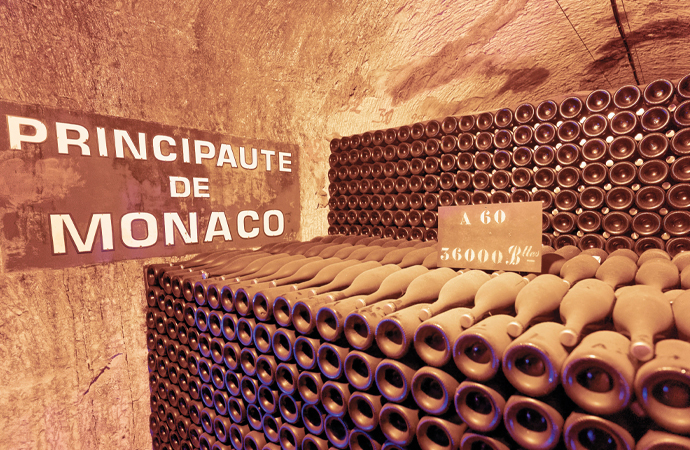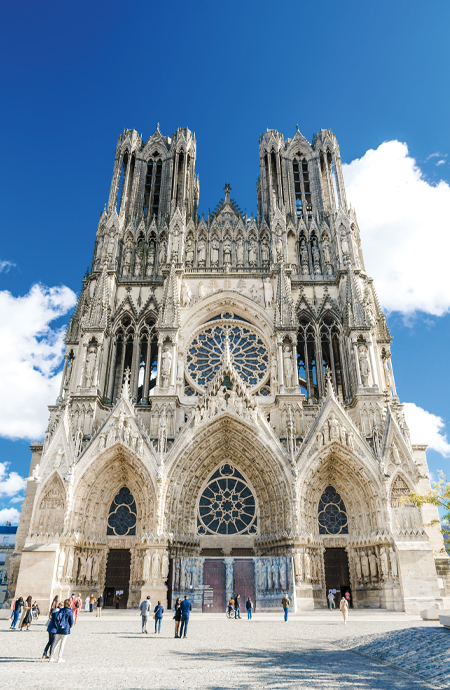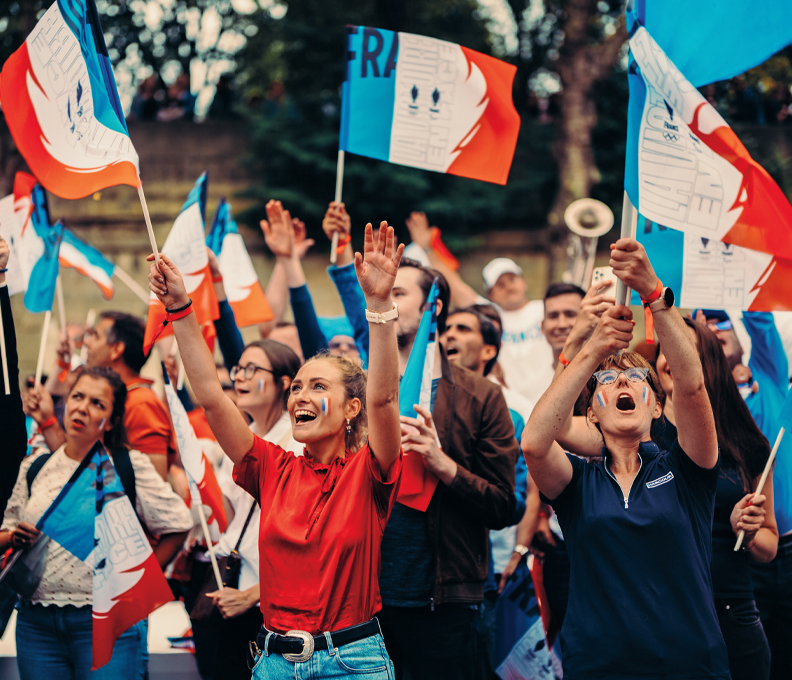How to Get the Best Out of France’s Champagne Region
You have three main options for touring Champagne: the large cathedral city of Reims, the smaller town of Épernay, or the countryside
by John Walton
February 7, 2024

Bicycling in the Montagne de Reims / Photo: Courtesy of Tourisme du Grand Reims/Cyrille Beudot
France’s stunning champagne region and its famous wines are on the doorstep of Paris, less than an hour away by high-speed train. If you’re planning a trip, allow us to pop the cork with tried-and-tested recommendations. You have three main options for touring Champagne: the large cathedral city of Reims, the smaller town of Épernay, or the countryside (in which case you’ll want a car).
Allow me—a longtime resident—to recommend you start with Reims. It offers the widest variety of places to stay, eat and visit.
Reims’ name may be tricky to pronounce, but it’s one of France’s most rewarding cities. To get to Reims from Paris, hop on the train. High-speed TGVs will whisk you from Charles de Gaulle Airport’s railway station or Paris’ Gare de l’Est to the center of Reims in 45 minutes for approximately $32 to $43. Épernay, if you want to visit, is about half an hour away by train.
The Best Champagne Tour Experiences
A hotspot for the champagne houses is Saint-Rémi, named after the beautiful basilica of the same name, which is well worth a visit between libations. As with everything in France, booking ahead is a good idea. Here, Veuve Clicquot has one of the slickest tour operations, ranging from the hour-long entry-level $38 tour of the caves (cellars) with a tasting of the famous Yellow Label champagne all the way up to the $276 four-hour program diving deep into the top-of-the-line cuvée de prestige vintage, La Grande Dame.

Cellar at Pommery / Photo: Travelstock44/Alamy Stock Photo
The tasting room (or, in summer, outdoor space) will happily offer a glass of La Grande Dame at a fairly reasonable price, so unless one of the specialty tours fascinates you the standard tour will probably suffice. A short walk away is Pommery, whose cellars host a fascinating exhibition of modern art. Louise Pommery’s remarkable Villa Demoiselle is next door, featuring art nouveau and art deco masterworks.
When looking to purchase a case of champagne, I keep returning to G.H. Martel & Co., which offers tastings and short tours. The standout is the shop, selling not just Martel’s bottles but also the range of its affiliated families at very fair rates.

Reims Cathedral / Photo: Courtesy of Tourisme du Grand Reims
Around Reims
The historic Reims Cathedral features beautiful stained glass both ancient and modern, including some gorgeous Chagalls and my personal favorite, the controversial abstract Imi Knoebel windows. Some of Reims’ best hotels are on an axis between the cathedral and the station, with the main tourist drag along the pedestrian street Place Drouet d’Erlon. Skip it and walk five minutes north from the cathedral up to the Boulingrin district.
Aim for the Halles Boulingrin, a typical French market featuring local artisanal specialties. Make yourself a pique-nique, sit at one of the cafés, or head to the real-world-French Le Bistrot des Halles—don’t be put off by the oddly ’80s decor, as the food is great. The Club Trésors de Champagne tasting house across the street features an entire room full of exceptional champagne producers whom you’ll almost certainly never have heard of, with a rotating list on tasting flights.
Elsewhere, let yourself be guided by Michelin for restaurants: Reims has some of France’s best. Le Jardin Les Crayères offers a very French refined yet casual experience, with its garden a real hit in summer, while Le Grand Cerf in the hills to the south of the city deserves its reputation. But as ever in France, be guided by where you see the French enjoying their well-deserved reputation for conviviality. A busy bistro is always a good sign!



